What Is The Best Instax Camera To Buy
Best instant photographic camera 2022: the finest retro models from Polaroid to Instax

Welcome to our guide to the best instant cameras you lot tin can purchase. Whether y'all're looking for a family-friendly camera to keep the little ones occupied or a more serious tool for retro prints, we've tested all of the latest instant cameras and ranked them beneath in our regularly updated guide.
What's the best instant camera you lot can buy in 2022? When information technology comes to affordability and accessibility, it's tough to beat the Fujifilm Instax Mini 11. Thank you to its inclusion of auto-exposure and autofocus, it's a not bad signal-and-shoot pick for beginners. But it'due south non necessarily the best option for everyone. If you want something with a more vintage look, check out the Fujifilm Instax Mini 40 – or for a hybrid counterpart-digital experience, the Fujifilm Instax Mini Evo.
Instax isn't the merely game in instant camera town, though, every bit nosotros've discussed in our Polaroid vs Instax explainer. The fundamental divergence is the film that each system uses, although both now offer multiple impress sizes to suit your fashion. If you want a truly compact instant camera and equally diddy film, then check out the Polaroid Go. But for more advanced shooting modes, including aperture priority and manual exposure, the Polaroid Now+ beats all other models nosotros've tested.
We continue this list regularly updated to make sure y'all'll always find the all-time instant camera for your budget. Not sure where to start? Check out our buying advice at the stop of this listing.
- Polaroid vs Instax: which is the best instant camera make?

Best instant cameras in 2022:
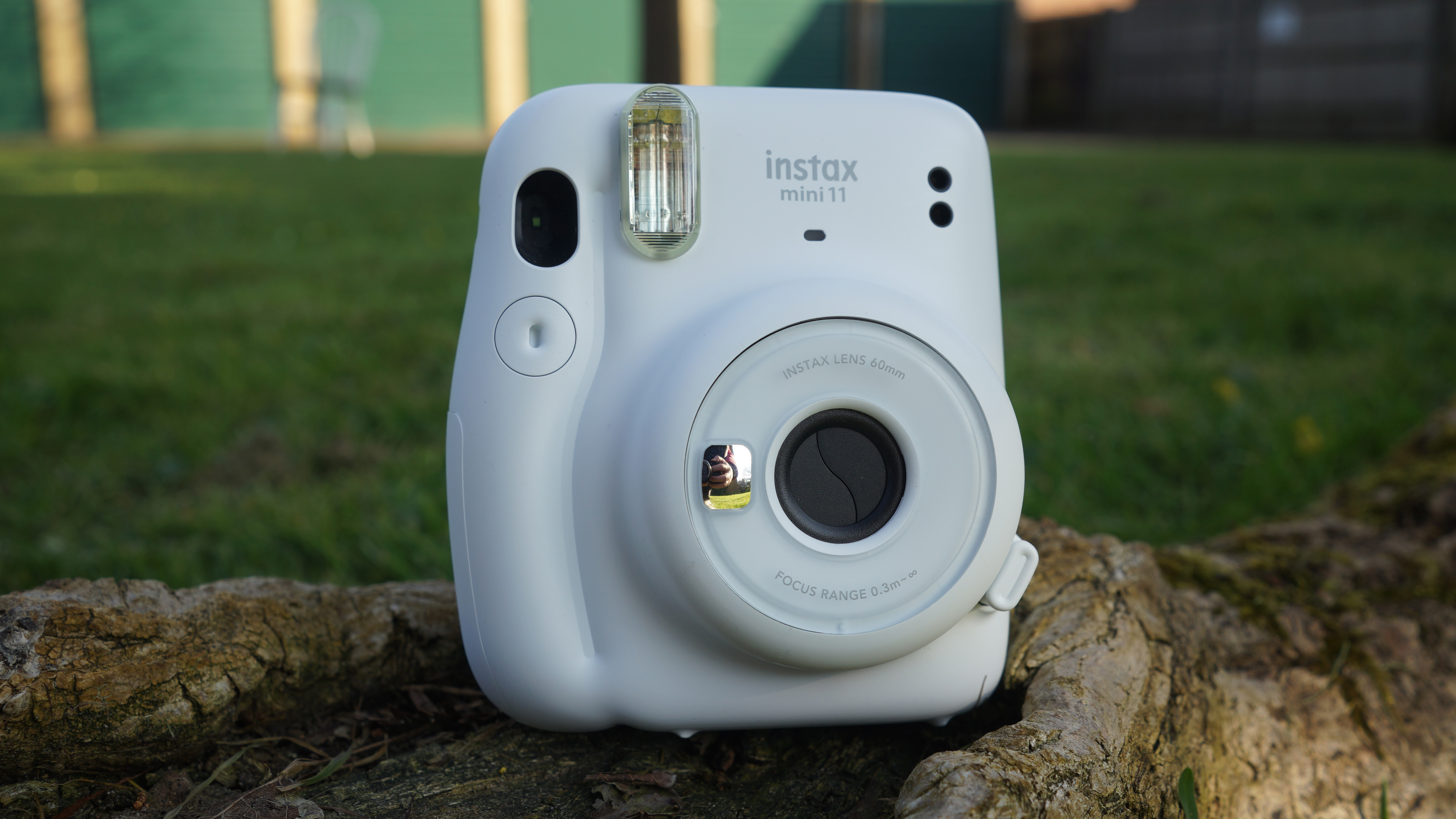
If you're looking for an affordable, easy-to-utilise photographic camera that won't overwhelm anyone that's new to instant photography, Fujifilm'south Instax Mini xi is our current favorite.
It may lack the more avant-garde modes and controls that you'll observe on more expensive models, but that's a big role of its amuse. An motorcar exposure system takes out a lot of the guesswork, pregnant you simply have to indicate and shoot to get decent credit card-sized instant prints.
A tiny mirror built into the front of the camera and a pop-out lens barrel for shut-ups means information technology'southward easy to become an instant selfie, while the affordable packs of Instax Mini motion-picture show brand information technology a not bad addition to any political party. It's available in a range of fun colors, so you should be able to find one that suits your mode.
Some other not bad thing almost the Instax Mini 11 is how great it is equally a present. Bachelor at a reasonable toll, it'd brand a lovely gift for a photography fan – especially young ones – who are keen to experiment with the medium. Remember to factor in some extra greenbacks for film, though.
- Read our in-depth Fujifilm Instax Mini 11 review

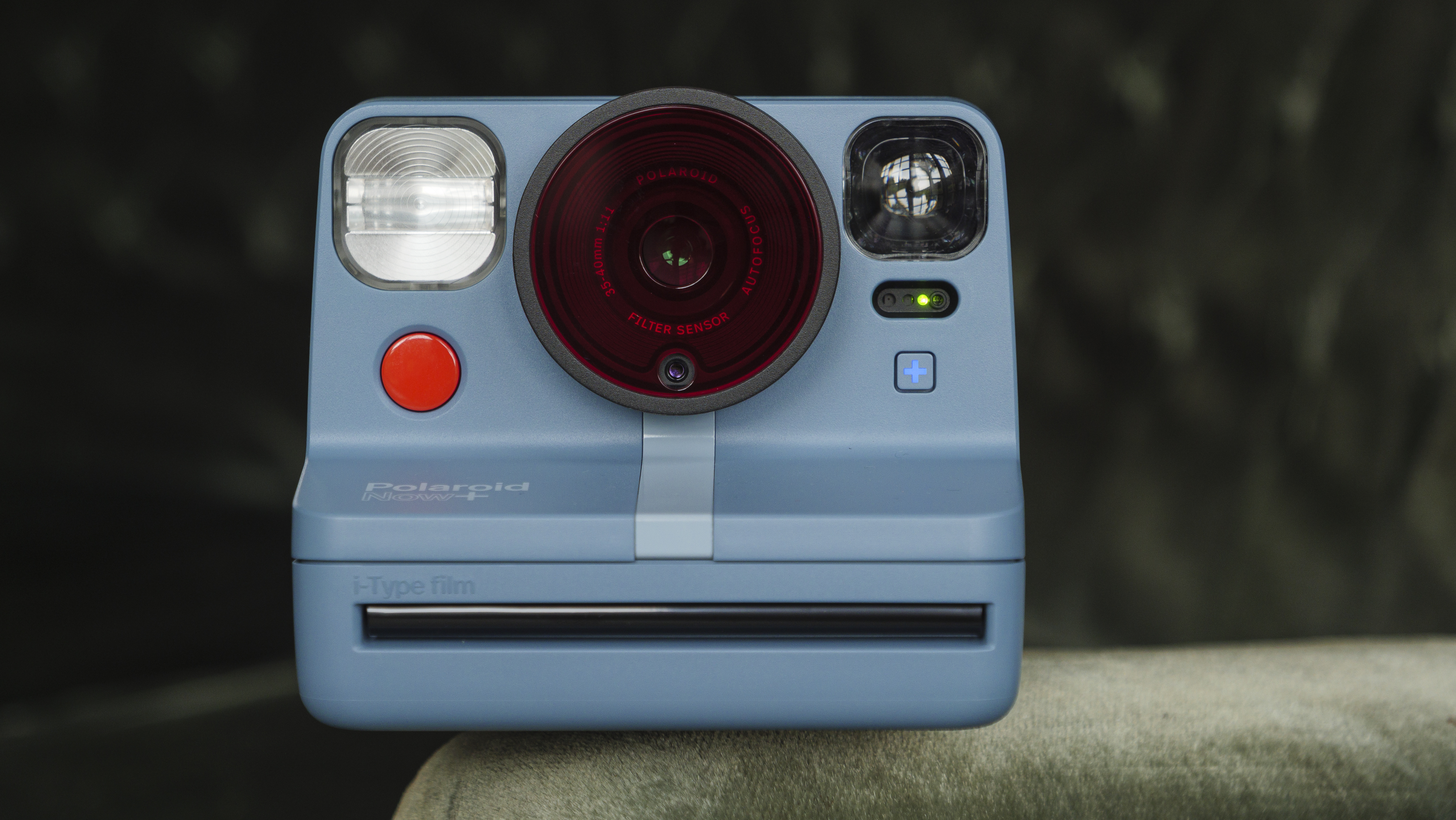
Combining the indigestible course factor, dual-lens autofocus and detailed paradigm quality of the Polaroid Now with the Bluetooth connectivity of the OneStep+, the revamped At present+ is Polaroid's nigh consummate instant camera even so. Connecting to the updated smartphone app opens up a realm of creative shooting modes: in addition to cocky-timer, double exposure, light painting and manual exposure options, in that location'south now an aperture propriety mode for experimenting with depth of field, every bit well equally a tripod style for use with the new spiral mount beneath.
Then while the Now+ remains as straightforward to utilize every bit any point-and-shoot, information technology's also a great pick for getting creative. What limits inventiveness a footling is the cost of Polaroid I-Type moving picture, which makes you recollect twice about wasting shots. Simply when you become it right, prints are merely as instant photos should be: large, delicious, vintage-fashion squares which come to full colour in 10-15 minutes.
- Read our in-depth Polaroid At present+ review


If yous're looking for a camera that mixes the charms of instant photos with the convenience of digital shooting, the Instax Mini Evo is a fine choice. Its digital photograph quality won't beat out your smartphone, but that isn't the point – the main benefit is being able to decide which shots you print out, to avert wasting precious movie. The Mini Evo itself is also 1 of the best-looking instant cameras around and more compact than Fuji's other models.
Another not bad party trick is its ability to double as a printer for your smartphone snaps, while in that location'southward also the option to play around with numerous built-in effects and filters earlier you lot hitting the print push button. These digital elements hateful the Instax Mini Evo doesn't offer a 'pure' instant photography experience, and is more complex than alternatives like the Instax Mini 11. But its versatility and charm more than compensate for those who want a bit more than point-and-shoot.
- Read our in-depth Fujifilm Instax Mini Evo review


Slightly more advanced than the Instax Mini 11, the Instax Mini 70 comes with 5 shooting modes (including that all-important selfie mode). Despite having a few more features, it doesn't cost also much - but once again you demand to cistron in some budget to pay for some Instax Mini Film.
In terms of usability, one thing to be careful of with the Instax Mini 70 is obscuring the flash with your finger when yous're taking shots vertically, but you get used to how information technology works with enough practise.
All of the modes are automated, and then everything is taken care of - focusing, exposure and flash are a doddle, but it would exist nice if you could control the flash manually (come across the more than expensive Instax Mini 90 for total control).

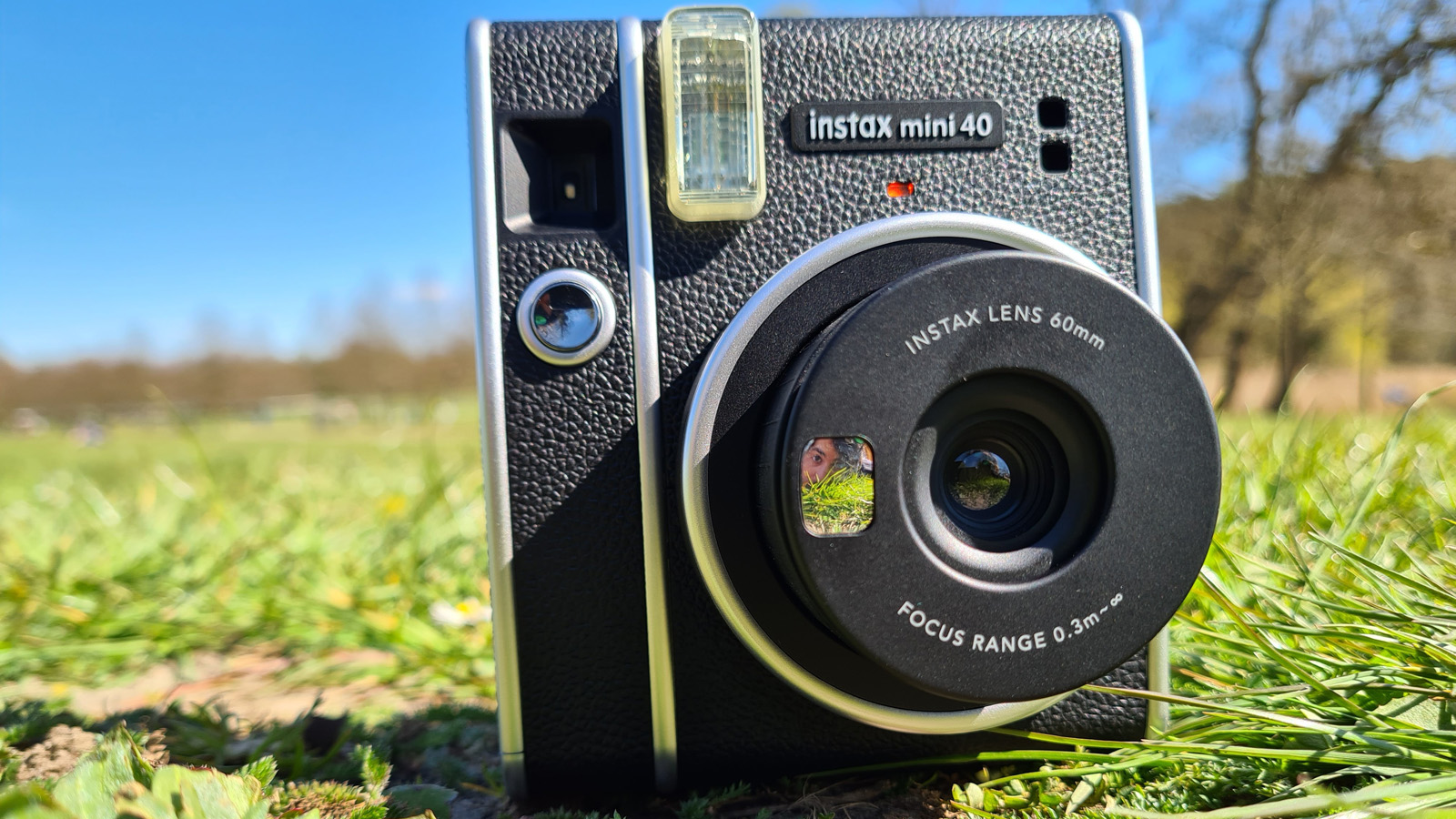
If the Instax Mini 11 (meet number one) looks just a little besides toy-similar for your tastes, the Mini forty is a more design-axial alternative. It has the same retro styling as Fuji's more expensive instant cameras, but underneath the skin it's mechanically identical to the Mini 11.
With variable shutter speed, an automatic flash and car exposure system that work together to ensure more of your photos produce usable results, and an adjustable lens barrel that's purpose-built for selfies, information technology's easy to recommend for both newcomers to instant film, and those that already capeesh the medium. Information technology uses Instax Mini film packs, which is still amidst the most affordable kinds on the market place.
At that place are no extra features, shooting modes or accessories to think about, which might put off anyone looking to get creative with their photography, and it also carries a price premium at launch. That makes it less easy to recommend than the Mini 11, but discounts could assistance bring that price tag down.
- Read our in-depth Fujifilm Instax Mini 40 review

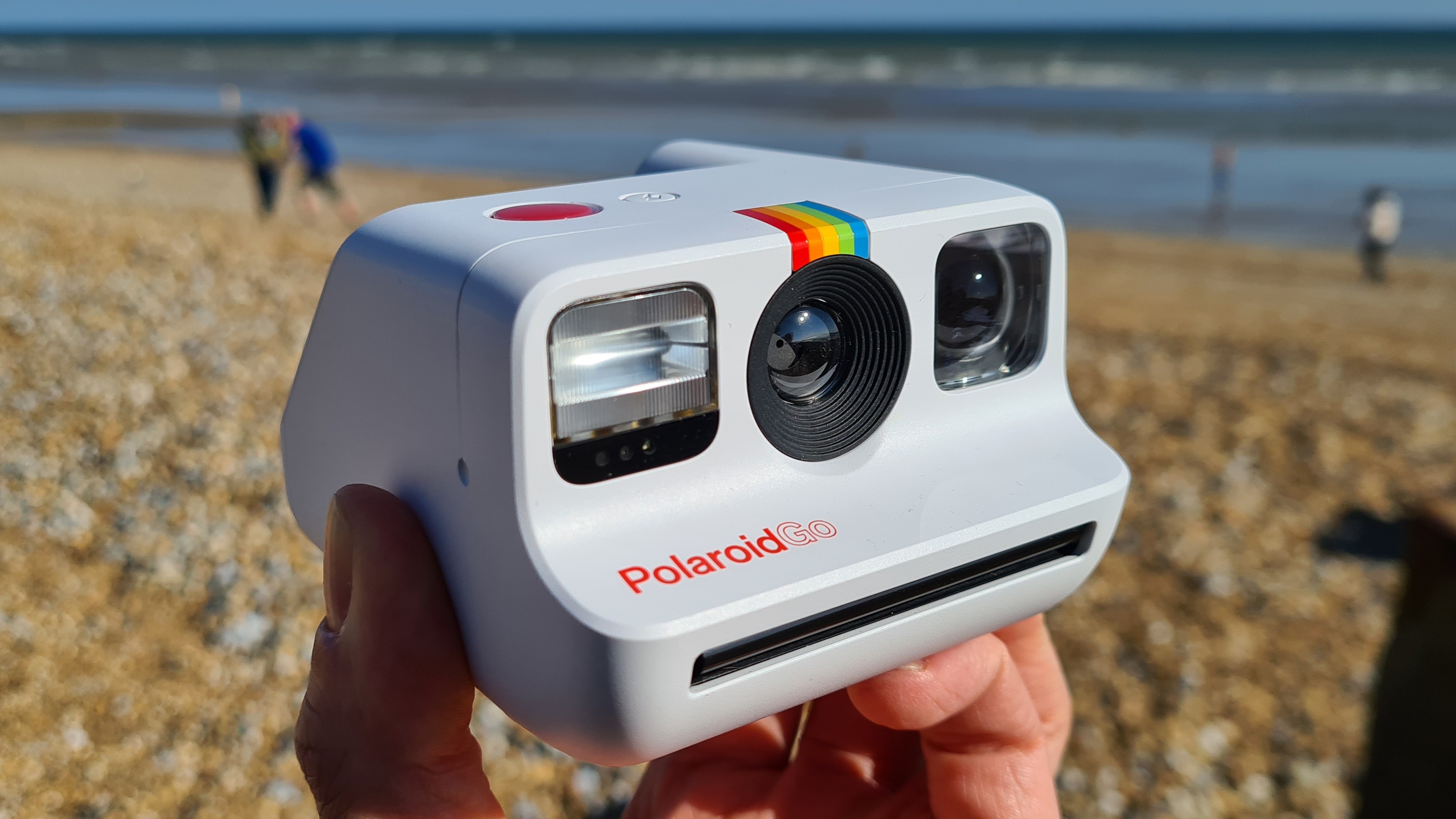
With the Get, Polaroid has edged ahead of Fuji on instant innovation – something that hasn't really happened since the late 1980s. It'southward officially the globe's smallest analogue instant camera, fitting squarely in the palm of your hand.
It's true that some hybrid instant cameras are even more pocketable, but they tend to 'cheat' past printing images on Cypher Ink newspaper, rather than with a chemic evolution process. You get the real deal here, in square format merely like the larger I-Blazon picture, only significantly smaller.
Information technology'southward a shrunken-downward version of the Polaroid Now (see above), with near of the same features, including self-timer and double-exposure style, which should please more than advanced photographers as well equally instant beginners. Autofocus sadly hasn't made the cut, yet, and so there's a higher chance of ending upward with blurry results if y'all don't go along a proficient distance from your subject area.
At launch, information technology costs roughly the same as the full-size Polaroid Now, making information technology a lot pricier than the entry-level Fuji Instax Mini 11, but that's a figure worth paying if you want an instant camera you can have just about anywhere.
- Read our in-depth Polaroid Go review


The Polaroid Now has now been succeeded by the more advanced Now+, but it remains a role of Polaroid's lineup – and information technology'due south a more affordable alternative, if you lot don't demand Bluetooth or app-based features similar light painting and double exposures.
Physically, the Now bears a strong resemblance to its OneStep 2 predecessor, retaining that iconic – if bulky – throwback form simply removing a few buttons, refining the viewfinder and replacing the LED lights with a much clearer digital shot counter.
It's designed for quick and easy snaps, and the new autofocus makes that simpler than ever, proving largely consistent in spitting out sharp, distinctive shots. Information technology also eliminates much of the guesswork associated with a stock-still-focus system – a welcome development, given the high price of I-Type film.
It's not totally reliable – exposure can be inconsistent, with the automated flash sometimes firing unnecessarily outdoors, or doing the opposite indoors – just that'due south a flaw common to many cameras of its ilk. Overall, the Polaroid At present delivers big instant prints with a unique lo-fi wait – and a foolproof shooting experience.
- Read our in-depth Polaroid Now review

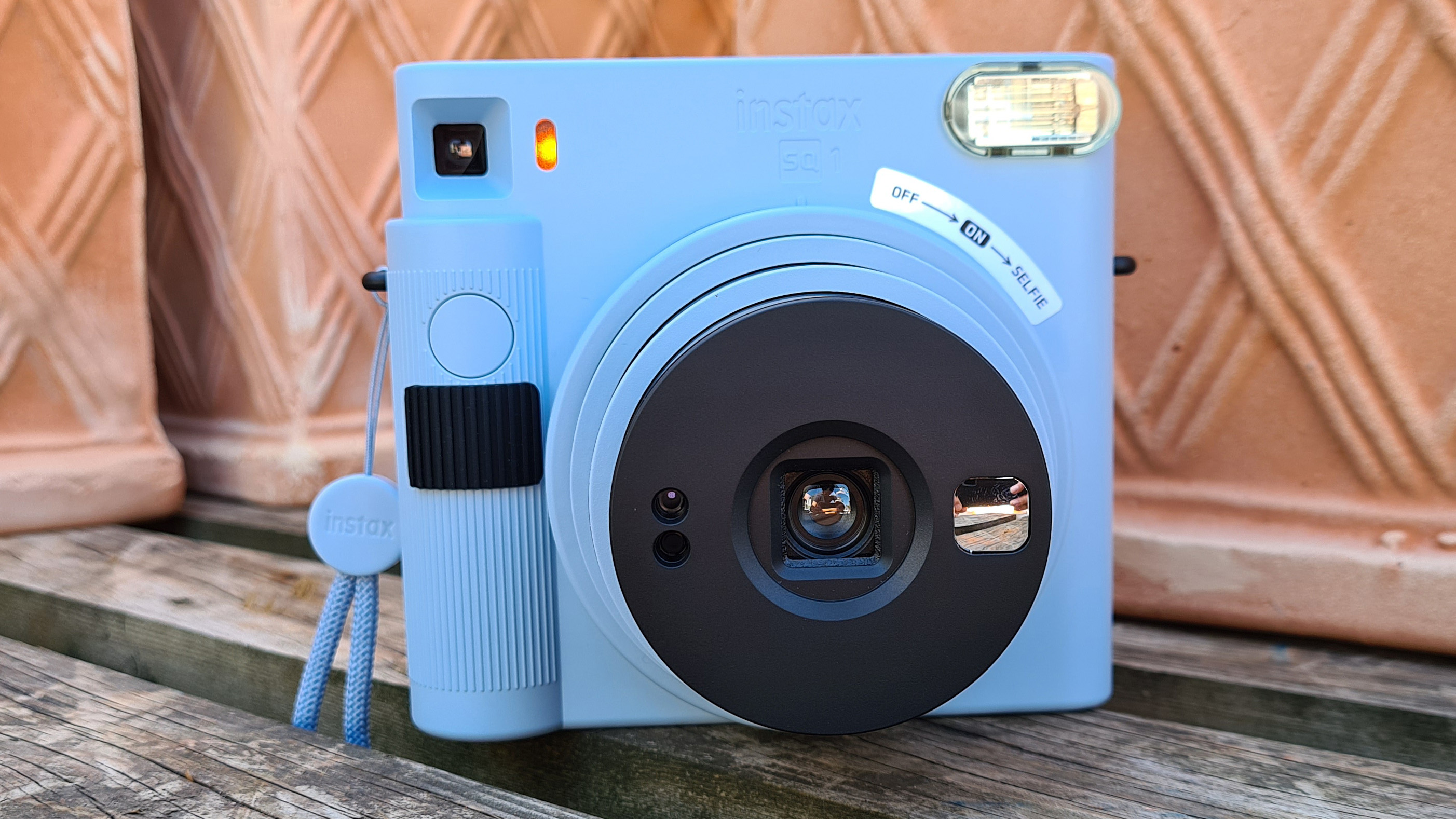
The value-minded SQ1 makes Fuji's Instax Square format moving-picture show that much more than approachable for anyone unfamiliar with instant photography. It has the same easy- to-understand features and useful auto exposure organisation of the Instax Mini 11, only the photos information technology spits out are almost twice equally large.
An adjustable lens barrel and congenital-in mirror are useful for close-ups and selfie shots, and the automatic flash is commonly smart enough to keep indoor and depression-low-cal snaps looking good in one case they develop. There aren't any other shooting modes to remember most, or even luxuries like a tripod thread, and the plastic construction feels noticeably less premium than the more expensive Instax SQ6, so this is a camera better suited to instant newcomers rather than creatives looking to experiment with the medium.
Still, it'due south a welcome pace up from the entry-level Instax for those wanting larger prints, without adding a handful of extra features they may not want to use.
- Read our in-depth Fujfilm Instax SQ1 review

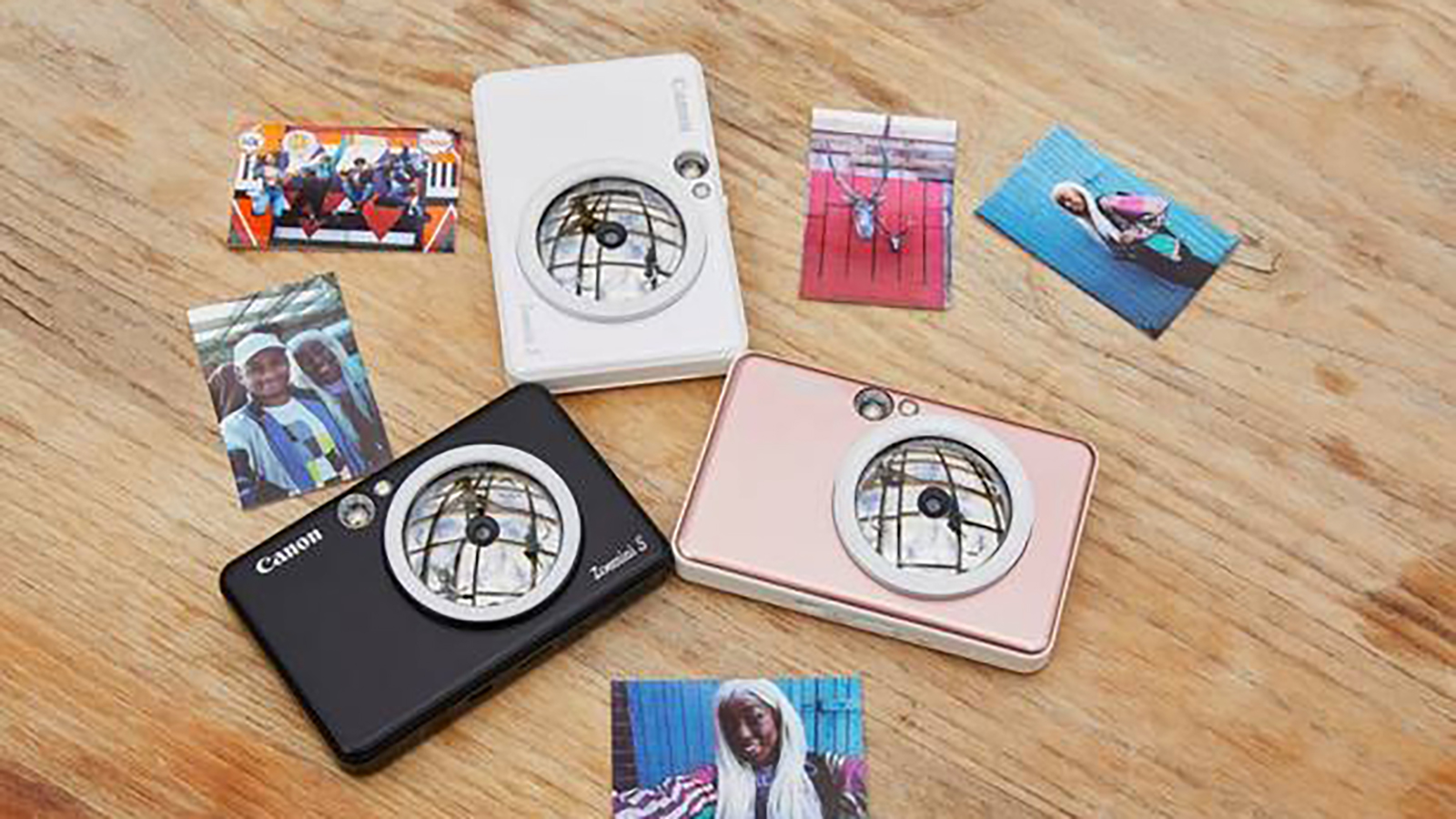
Catechism'due south first instant effort is really more than of a hybrid, blending counterpart 'film' with digital smarts. The Zink (zero ink) paper information technology uses doesn't need exposing to light like regular instant film, and so the camera can be much smaller. The Ivy Cliq+ / Zoemini S is truly pocket-sized, beating even Fuji'southward Instax Mini LiPlay for portability.
A built-in LED ring flash helps you take pleasing portraits, the mirrored lens barrel is purpose-built for selfies, and focusing is automated, making this a nifty party camera. Yet, it can exist sluggish to start up and printing a moving-picture show takes around 10 seconds – much slower than our electric current favorite, the Fuji Instax Mini 9. The credit bill of fare-sized prints it produces are much more detailed, though, with colors more like a traditional 35mm photo than the dream-similar lomographic effects seen with other instant film.
Battery life typically stretches to two packs of 10 images, merely even with an SD card installed, it won't take any more than pictures once you're out of moving-picture show. The 8MP sensor is merely on par with today's entry-level smartphones, and with no congenital-in screen, you lot'll need a computer to review your digital snaps.
It seems a lot simpler than other hybrid cameras, only built-in Bluetooth support lets it perform double duty as a portable printer. Existence able to turn your smartphone snaps into physical prints gives it an edge over bulkier instant cameras, and it'south sensibly priced besides.

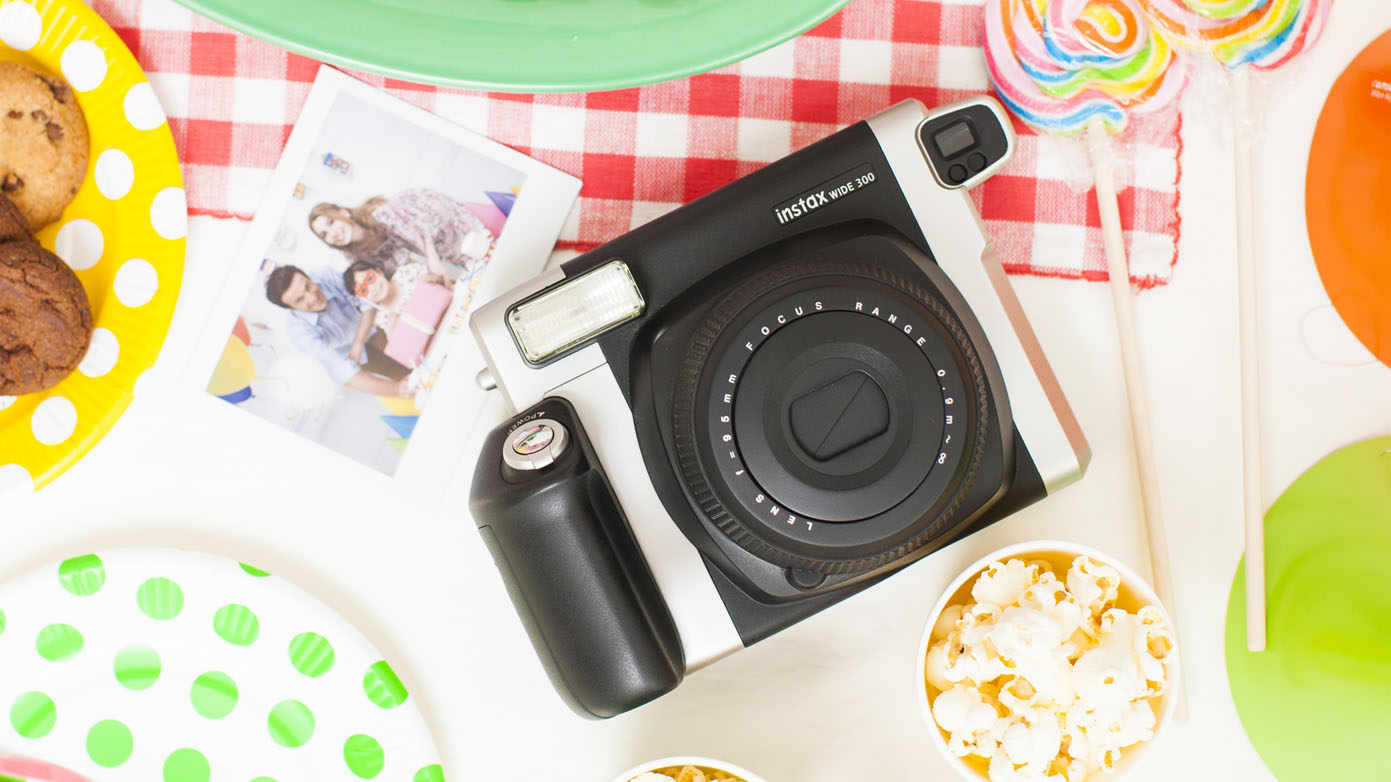
Large inappreciably covers it. The Instax Wide 300 is the size of an old-fashioned medium-format rangefinder photographic camera, even a pocket-size folding field camera. Information technology's because it uses Instax wide movie packs rather than the regular Instax mini. The Instax 300 wide might expect big and clumsy but it's low-cal, and the generous grip makes it easy to hold and apply. Y'all power upward with a leap-loaded switch effectually the shutter release, which extends the 95mm lens.
The Instax wide format is much larger than a digital sensor, then this equates to a moderate wide-angle lens. For a big camera, though, the Instax Wide 300 has a tiny viewfinder. It takes practise fifty-fifty to become your eye lined upward with the eyepiece.
Otherwise, it's simple to use and delivers very good results. Where the regular Instax mini format produces small photo 'tokens', these are more like proper photographs - nosotros'd beloved to run across Instax producing a printer in this format , as it has washed with its Mini and Foursquare formats.


Unlike the original instax SQUARE model, namely the analog/digital hybrid SQUARE SQ10, the SQ6 has a different idea in mind. Shaped like the Instagram logo and very much targeted at the kind of younger user who shares their creations on the platform, the photographic camera runs on a pair of CR2 batteries and spits out six.2x6.2cm prints, with the selfie mirror integrated into the forepart of the camera allowing for more effortless self captures.
Instax foursquare prints feel like more serious photographs, with their larger size giving your bailiwick more room to exhale. Fujifilm throws in orangish, purple and greenish wink filters to let for an instant injection of colour into images, and as the body is nowhere near as cumbersome equally some of the other options here, information technology ends upwardly being as convenient to carry as information technology is fun to utilise.
This is another neat option for a gift, too.
- Read our in-depth Fujifilm Instax Square SQ6 review

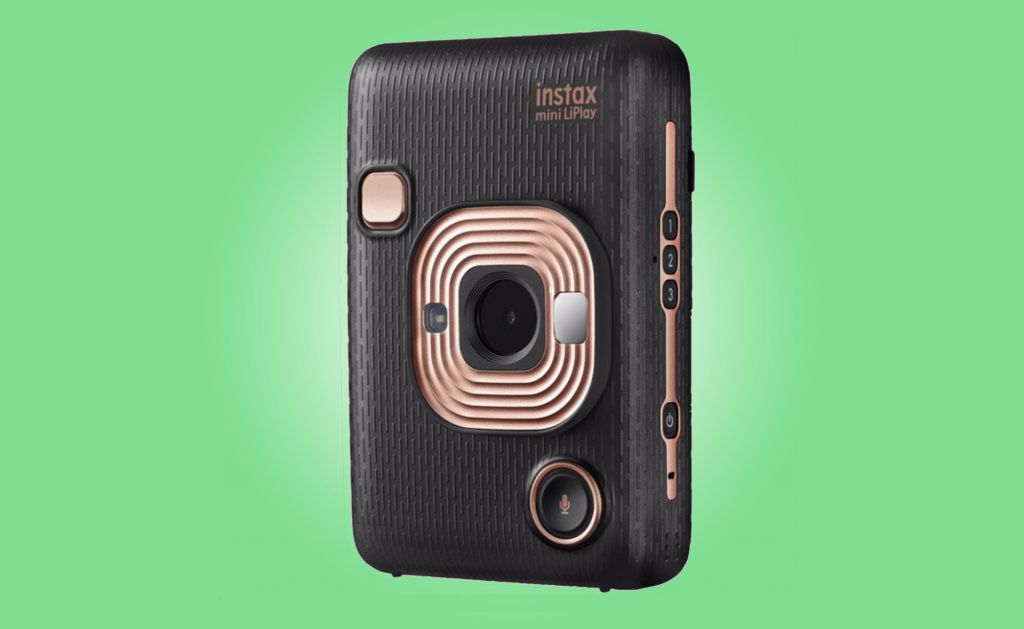
Combining retro-analogue charm with modern-day digital credentials, this is essentially a basic, depression-resolution digital camera with a printer built-in for making instant snapshots. This gives you the opportunity to properly frame upwardly your subject area, and cheque it's something yous actually want to print, before wasting expensive picture (it uses Instax mini).
One of the gimmicks of the LiPlay is the function to tape a sound along with your image capture and "embed" it on to your impress in the shape of a QR code. Y'all can then gift that to a friend and ask them to scan the lawmaking to playback the audio - modern digital means are much easier though so how much you carp with that remains questionable.
You might notice that purchasing an Instax mini printer is a better option for ameliorate quality prints, but the LiPlay is a fun choice for kids and parties.

How to pick the best instant photographic camera for you
While virtually instant cameras are simple and relatively affordable, there are still a few cardinal things to think about when picking the best instant camera for your needs and budget.
The cheapest models will usually amount to trivial more than toy cameras with basic point-and-shoot settings. These are fine if you just want a straightforward camera for fun party snaps. Simply you'll need to spend a little more than for modes like macro-focusing, while the college-end is where you'll find hybrid digital functionality. This allows you to hook up your camera to a smartphone for farther creative controls – or to produce concrete prints from your smartphone's camera roll.
Print quality and size are also worth considering. Although no instant brand delivers super-accurate results (that'south part of the vintage charm), Instax arguably produces the about natural images. Polaroid prints tend to take a dreamier look, which tin be just as highly-seasoned, depending on your preferences. Films also come in different sizes to accommodate specific cameras, so it'south worth considering whether you'll desire small prints or something bigger.
While instant cameras are generally affordable, you'll demand to factor in the cost of picture. It can add upwards pretty quickly, so pay attention to the toll per pack – and remember about how many pictures you're likely to shoot on a regular footing. Polaroid film tends to exist pricier than Instax – for the cost of a single pack of 8 color Polaroid I-Type shots, you can get ii packs of ten Instax Mini film.
Some instant cameras with digital screens or smartphone connectivity allow you to preview your shots earlier printing them out, to dramatically reduce wastage (and therefore the cost of dud snaps).

What is the deviation between Polaroid and Instax?
Polaroid and Fujifilm's Instax are the two biggest brands in instant cameras. While both utilize like applied science, using chemical reactions that self-develop each image in your hand, the main divergence between them is the blazon of pic their cameras have.
Polaroid cameras take one or two types of pic: the larger I-Type, which produces square format photos, and the newer 'Get' film, used by its tiny Polaroid Go photographic camera. Y'all tin can choose between colour and black-and-white film, forth with a range of different edge colors.
Instax cameras offer a wider diverseness of film types: there's Instax Mini, Foursquare and Broad film. Like Polaroid's picture show, these can't be mixed and matched between cameras, and so choosing your preferred flick type is an important part of picking the right instant camera for you.
Which is the best type of film? Polaroid'southward I-Blazon has the edge for size, but Instax film tends to work out as a lilliputian more affordable. For instance, for the toll of a single pack of eight color Polaroid I-Type shots, you lot can go two packs of 10 Instax Mini film.
For a full comparison between the instant camera brands, check out our Polaroid vs Instax guide. And to compare the sizes of all the different Polaroid and Instax picture show types, check out our full ranked list below.

Which instant camera film is the best?
1. Instax Mini
The almost mutual instant motion picture format, producing pictures measuring just 62 x 46mm.
2. Instax Square
Fuji's take on the foursquare format flick popularized by Polaroid. Camera support for these 62 x 62mm photos is more limited.
3. Instax Wide
Twice the size of instax mini and twice the cost, but photos measure a meatier 99 10 62mm.
4. Polaroid I-Type
Designed for use in the Impossible I-1and OneStep two, I-Type pic packs don't accept batteries built in, then tin't exist used with vintage Polaroids.
5. Polaroid Go
Polaroid'south answer to Instax Mini, the Polaroid Go movie measures 66.6mm x 53.9 mm and is designed to piece of work with the camera of the same proper name.
6. Polaroid 600
Flick designed for vintage Polaroid 600-type cameras. It can also exist used in the Impossible I-1 and OneStep 2.
vii. Polaroid Zink 2x3
Credit-carte du jour sized instant moving-picture show that uses heat-sensitive ink to produce images. Colors are more traditional than Instax. Compatible with many Zink-based cameras and printers.
Are new instant cameras still existence fabricated?
Instant cameras might seem a little one-time-school in 2022, just they're definitely still existence made. In fact, they're an increasingly popular photography format. Inspired past retro cameras from the days when counterpart film was the norm, these modernistic remakes are designed to recapture the accessible fun of betoken-and-shoot photography.
There are enough of reasons why you might want to buy an instant camera in 2022. Unlike smartphone photography, instant cameras give you a physical print to hold in your hands directly away, stick on the fridge or share with your friends. It's a novel, tactile way to reconnect with photography'due south fun factor.
Another bonus is how easy it is to shoot with an instant photographic camera. The all-time options are really uncomplicated to apply, making it straightforward to capture warm vintage prints. Nearly feature merely a handful of buttons and express shooting modes, leaving you costless to focus on framing. What's more than, instant cameras tend to be available at much more affordable prices than compact cameras. That means they can be a great way for kids to get into photography, too.
Analogue photography has enjoyed a revival in recent years, and the tendency shows no signs of going away any time soon. Instant cameras permit you have a slice of the throwback pie without the steep learning bend, expense and hassle of more complicated pic photography techniques.
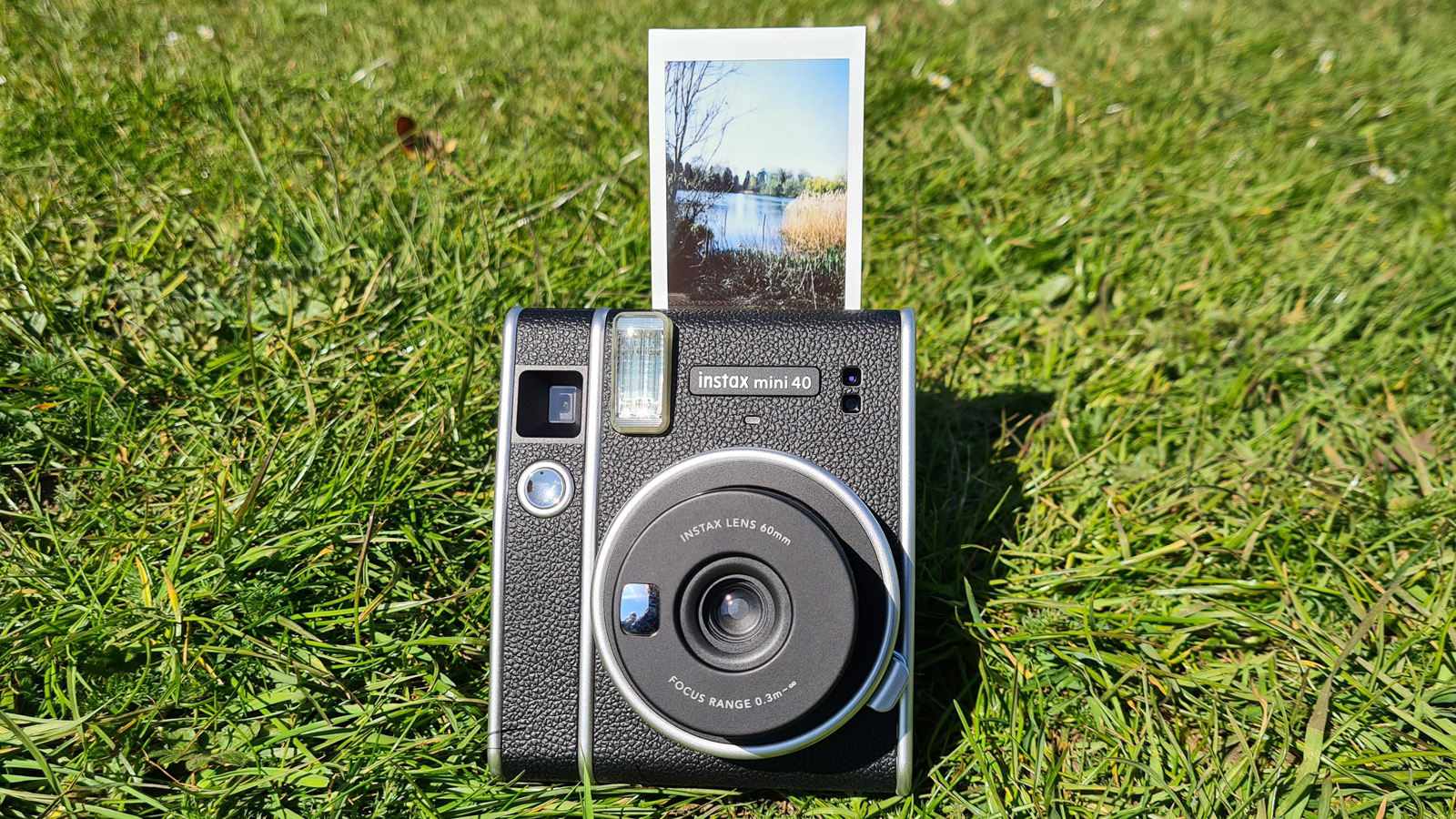
How we test instant cameras
There'due south only one way to test instant cameras, and it isn't by pixel-peeping resolution charts – for these analogue snappers, it's all near real-world apply. Later analyzing each camera's design, build quality and features, nosotros load information technology up with film and have information technology out for a day of instant photography. We take a range of shots of dissimilar subjects: people, high-contrast scenes and objects similar flowers, to give us a expert sense of how well the autofocus works (if the cameras has autofocus) and the kind of colors you can expect in different situations.
Nosotros also plough the flash on to run across how that fairs, and time how long it takes for the print to be ready. Some instant cameras, similar the Polaroid Now+, also have companion apps, and so in those cases we'll examination how well they connect to a smartphone and as well take whatever special features (like double exposures, or low-cal painting) for a spin to see how well they work in practice.

- Best cameras for photography
- Best camera for beginners
- Best digital photo frames
- Best DSLR
- Best mirrorless photographic camera
- All-time total-frame camera
- All-time compact camera
- What camera should I buy?
- Mirrorless vs DSLR: 10 central differences
Source: https://www.techradar.com/news/best-instant-camera
Posted by: richardsniumor1935.blogspot.com

0 Response to "What Is The Best Instax Camera To Buy"
Post a Comment